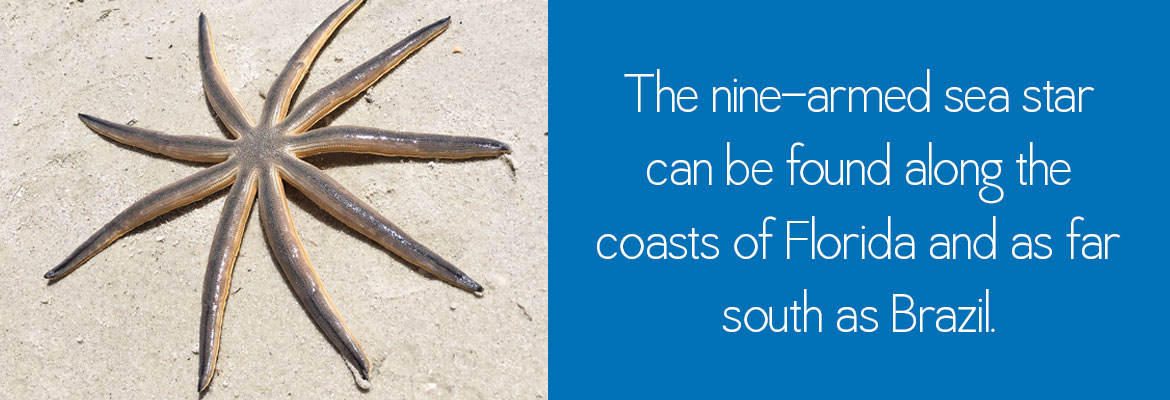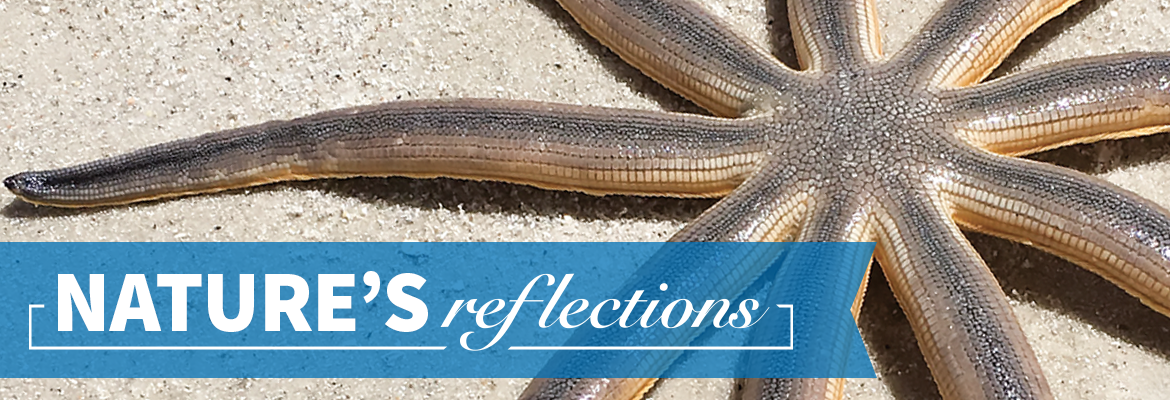Nature’s Reflections – Nine-Armed Sea Star
Once called a starfish, although it is not a fish
Sea stars are Echinoderms (Echinodermata) —a group of animals whose name means “spiny skin,” which includes sea urchins, feather stars, sand dollars and sea cucumbers. About two thousand species exist exclusively in oceans worldwide. None are found on land or in freshwater. Sea stars have tentacle-like structures called tube feet with suction pads situated along the extremities. Sea stars have an eye at the end of each tentacle, but cannot see color. An internal hydraulic-type system pumps fluids through the body, allowing the star to both move and feed. While predators themselves, most are covered with spiny skin for protection from other predators.
The Nine-armed Sea Star (Luidia senegalensis), is a millipede with long, slim tapering arms attached to a small circular center. This sea star grows between twelve to sixteen inches in diameter. The topside is a patchwork of closely packed spiny plates from brownish gray to tan. The underside of the sea star has small white spiny plates and a central band of translucent, orange tube feet. The mouth is at the center of the disc. Undigested food fragments are expelled through the mouth. Like other echinoderms, it has the ability to regenerate lost or broken appendages.
It is found at the beach in shallow water and in depths of up to 130 feet along the coasts of Florida, and as far south as Brazil. It dines on mollusks, small crustaceans, tiny fish and worms. Many foods are swallowed whole and ingested by turning its stomach inside out to consume its prey. It also buries itself in the sand, filtering it to extract tiny organisms.

Breeding takes place throughout the year. Sea stars release egg/sperm cells into the sea. The eggs hatch into larva which drift along with the plankton to grow. After twenty-five days, the larva settle on the ocean floor and undergo a metamorphosis into juvenile sea stars.
Sea stars can be found in a stunning variety of shapes and colors in every ocean and reef around the world. They are best characterized by their unique symmetry. Most have five arms, while others have ten, and up to as many as forty arms. The lifespan of a sea star is reported to be from five to thirty-five years.
Column & photos by Sandi Staton – sandi.staton@gmail.com
Read the full Nature’s Reflections article in the August 2017 SECO News here.






